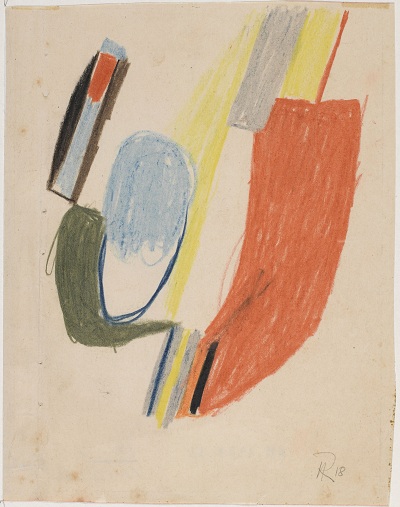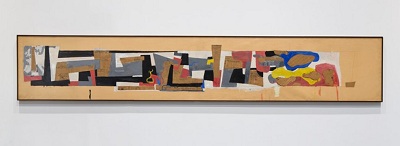If anything, art is a labor of love. Visit LACMA this holiday weekend to see what I mean. Beginning Friday evening, Jazz at LACMA presents Grammy nominated artist Denise Donatelli and her return to the Urban Light stage. Her latest full-length work, Soul Shadow, was one of the best jazz vocal albums from 2012. After her performance, the west side of campus stays open late—until 11 pm—for one final summer hurrah. It’s a great opportunity to see (free of charge) the resplendent work of German polymath Hans Richter and his fascinating career as both an innovator and a collaborator in Hans Richter: Encounters before it closes on Monday, September 2.

Hans Richter, Filmstudie (Film Study), 1928, © Hans Richter Estate
On Saturday join in on any of our half-dozen free tours exploring the voluminous collection, including an hour-long overview of The Presence of the Past: Peter Zumthor Reconsiders LACMA at noon. This exhibition ponders the history and future of the LACMA campus at Hancock Park, featuring the designs of Pritzker Prize–winning architect Peter Zumthor. Widely considered to be one of the most site-sensitive architects today, Zumthor’s vision for the museum rethinks the meaning and function of an encyclopedic museum. Earlier this summer, Zumthor and CEO and Wallis Annenberg Director Michael Govan took part in a public conversation about the project, see the discussion here.
Saturday evening also marks the final concert of our 2013 season of Latin Sounds with Johnny Polanco. For 35 years Polanco has played with artists like Cachao, Ray De La Paz, and Tito Puente, Jr., making his band one of the hottest salsa acts on the West Coast. The free show begins at 5 pm in LACMA’s backyard and is open to the public.
Families planning a trip to LACMA this weekend should visit on Sunday during Andell Family Sundays. In September, children are invited to create their own textile art as inspired by Pinaree Sanpitak: Hanging by A Thread. In this exhibition, Thai artist Pinaree Sanpitak assembled a series of hammocks from a traditional printed cotton textile, paa-lai, in the wake of severe flooding during the 2011 monsoon season. Her work explores the human form and the various qualities associated with the female body. Two floors down, the new exhibition Masterworks of Expressionist Cinema: The Golem and Its Avatars looks at the European legend of the golem—a large, powerful creature made of clay. Lastly, at Sundays Live, a string-and-piano quartet performs pieces by Brahms and Martinů at 6 pm in the Bing Theater.

Paul Wegener (director), Germany, 1874–1948, Carl Boese (director) Germany, 1887–1958, Film still from Der Golem: Wie er in die Welt kam (The Golem: How He Came into the World), 1920, Written by Paul Wegener and Henrik Galeen, Produced by Paul Wegener,black and white, silent
Finally, for Labor Day, LACMA is open from 11 am to 5 pm. There are free tours all day and Story Time for the kids begins at 2 pm in the Hammer Building. Beyond great, new exhibitions like Down to Earth: Modern Artists and the Land, Before Land Art; Little Boxes: Photography and the Suburbs; and Lingering Dreams: Japanese Painting of the Seventeenth Century; general admission is free for L.A. County Residents after 3 pm. Happy Labor Day!
Roberto Ayala



 Posted by lacma
Posted by lacma 













